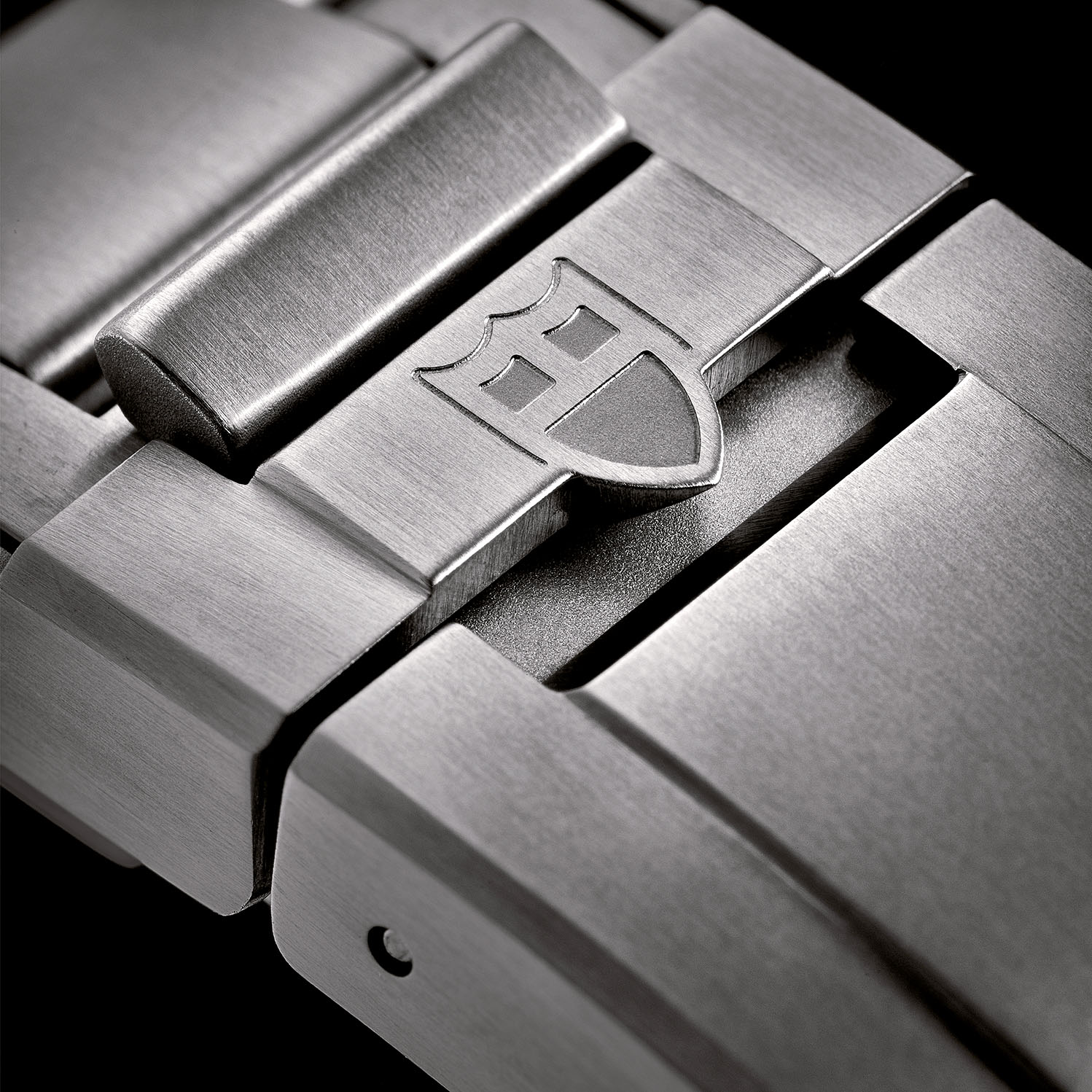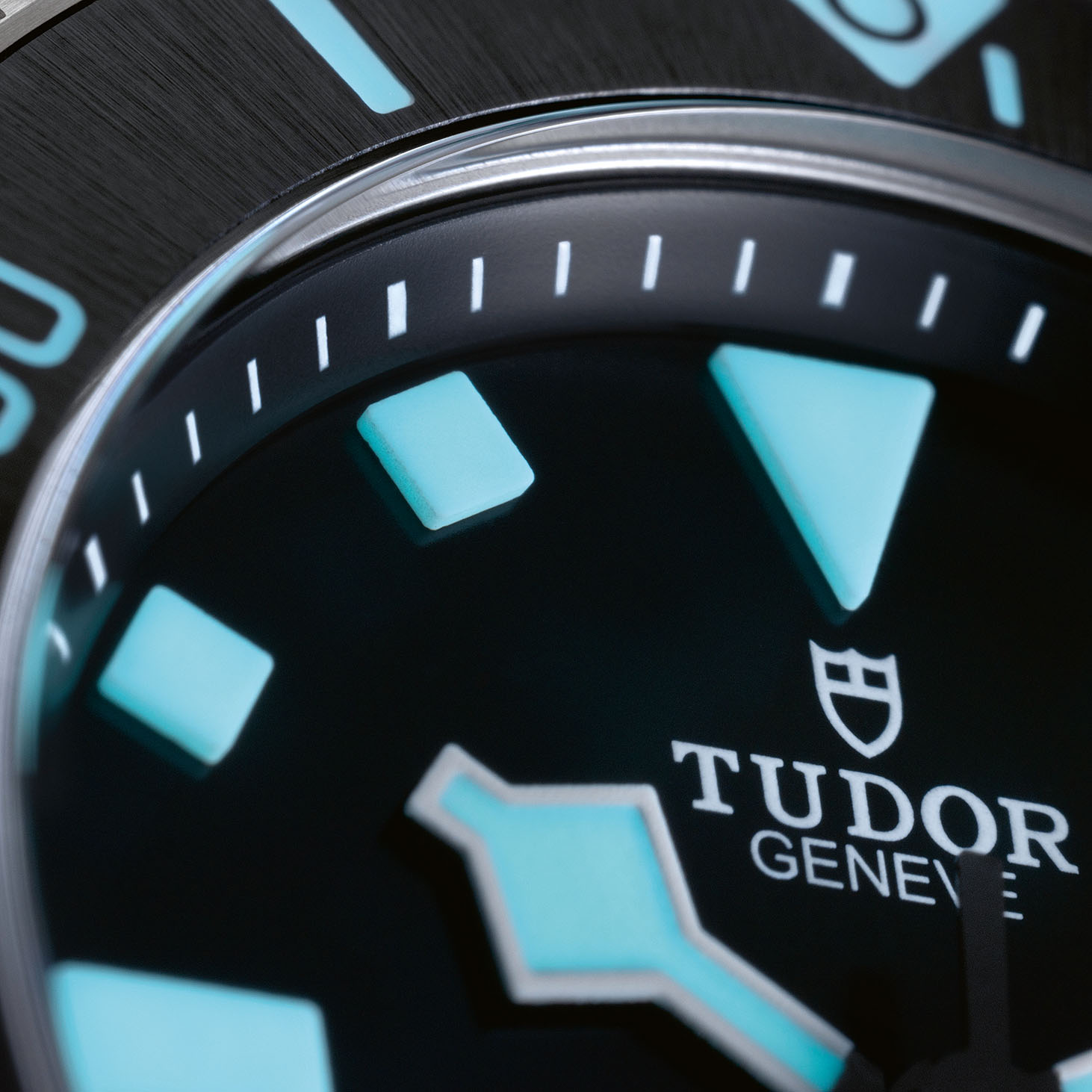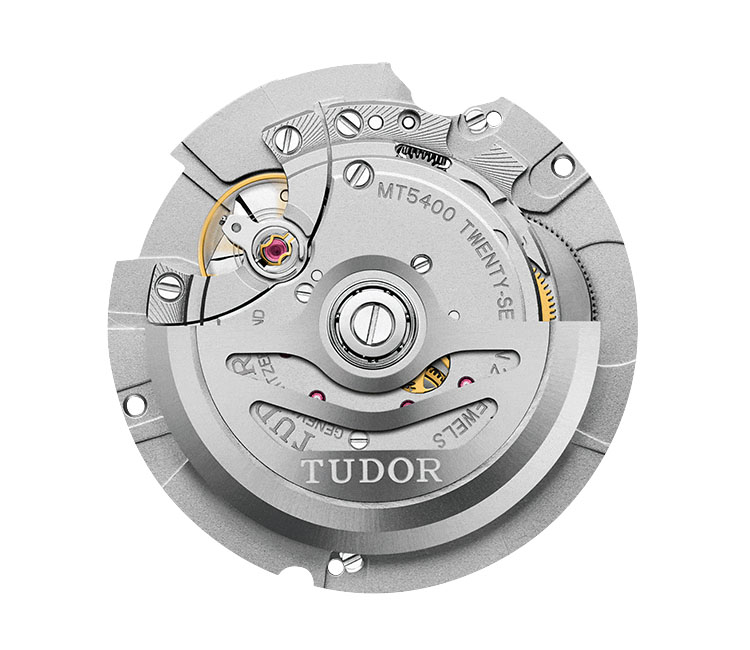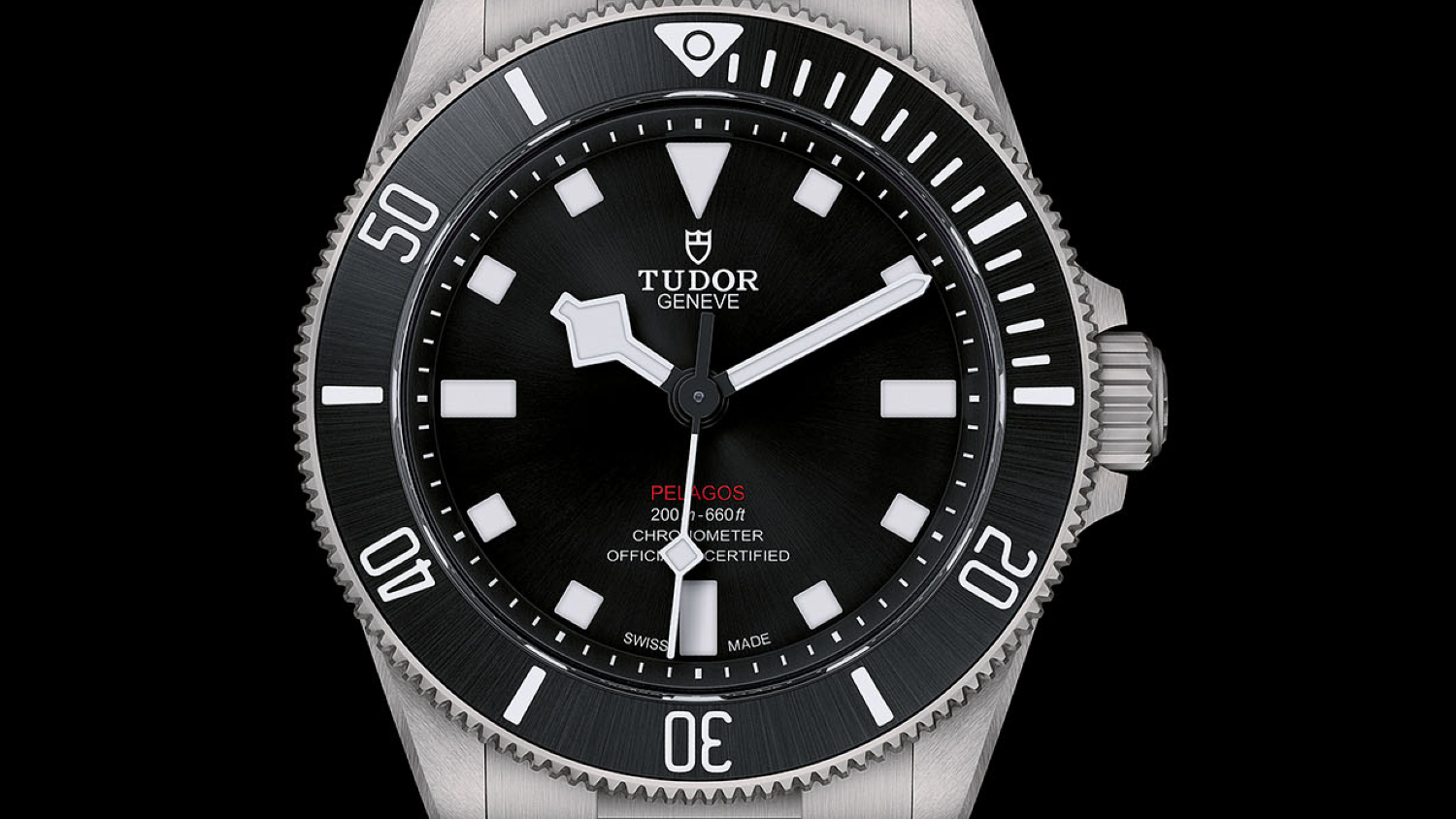Just a few years ago, professional pilots’ watches and dive watches were expected to be as large as possible. But are there any good reasons for this? The case of a dive watch naturally requires stately dimensions at depths of 2,000 metres or more, but isn’t the pressure resistance to 200 metres offered by the Pelagos 39, our test watch, sufficient for most uses? Few divers go deeper than 100 metres, which still leaves enough reserve for the dynamic pressure that spikes when you move your arms and, therefore, your wristwatch, under water.
When it comes to legibility, a large dial has a certain advantage, but a sufficient quantity of good luminous material is even more important. And when it comes to operation, the good grip offered by the rotating bezel and the crown of our test watch plays a greater role than the diameter, which is a moderate 39 mm.
Designed for Combat Swimmers
With its characteristic snowflake hands and block indexes, the watch’s design recalls the dive watches that Tudor supplied to combat swimmers of the Marine Nationale, the French navy. The first models were still in the style of the
Rolex Submariner, but Tudor’s own design has been used since 1974. These watches were supplied to the French Navy or, more precisely, to the Commando Hubert, the unit for combat swimmers, until the 1980s.
Tudor revived this tradition in 2022 with the Pelagos FXD. Now Tudor’s professional dive watch collection gains an added touch of elegance with the Pelagos 39, which has a smaller diameter case, sunburst finishing on the dial, and no date display.
Do these elegant details detract from the watch’s functionality? Not when it comes to operating the timepiece. The fine fluting and the protruding bezel ensure that the rotating ring is very easy to adjust. In addition, it clicks almost as snugly into place as do its counterparts on the timepieces made by its big sister Rolex. The crown is also easy to grip; when screwed in, it decouples from the winding mechanism, which protects the inner workings. Setting the time is easy thanks to the stop-seconds function and the absence of a date display, which eliminates the first extracted crown position.
Good legibility of the time is more important to French combat swimmers than a date display, so the
FXD does not have a date indicator. But the Pelagos 39 does without one primarily because the dial looks better and is more reminiscent of the models Tudor made for the French Navy in the 1970s. Whether or not a date is genuinely needed on a wristwatch remains a matter of taste.
Unlike a date display, legibility is essential for a dive watch. This is where this Tudor model shines in the truest sense of the word because in addition to good contrast during the day, it also glows very bright in the dark. This has to do with the construction of the applied indexes, which combine ceramic and luminous material so they can accommodate significantly more light-emitting substance than if Tudor had simply brushed on a coat of luminous paint. The indexes and numerals on the rotating bezel also glow in the dark thanks to their own luminous material. The high-quality Super-LumiNova® X1 used shines brightly in the dark with a beautiful blue colour.

Unfortunately, there is no glass caseback, all the more regrettable because the typical Tudor textile pull-through straps, which usually cover the back, are not used here, so the view of the back would be unobstructed. Both the installed titanium bracelet and an alternate rubber strap are included with the watch. However, this model doesn’t offer a quick-change system, so tools are needed to change the wristbands.
With the light titanium bracelet, the watch lies comfortably on the wrist. A big advantage is the lengthening mechanism in the clasp, which enables you to add up to 8mm in five increments. A somewhat longer bracelet can be comfortable to wear in the summer. If a longer wristband is needed, for example, to wear the watch over the sleeve of a thin wetsuit, a fold-out extension mechanism can add another 2.5 centimetres. If you dive in the winter and wear a drysuit, you can attach the watch to its rubber strap, which has an extension piece that adds 11 centimetres to the strap’s length. The strap even has expansion gussets, which take into account the different trim levels and the varying thickness of a drysuit.
Precise Movement
Unscrewing and removing the fully threaded caseback reveals self-winding Caliber MT5400. It’s built by the movement maker Kenissi, which was co-founded with Tudor and also supplies calibres to Chanel, Breitling, Fortis, and other brands. The movement is impressively robust and precise. It owes much of this sturdiness to its impressive height of 5mm, which assures that even the smallest tolerance fluctuations in the manufacturing process do not cause malfunctions. In addition, the balance is not held only on one side by a cock, but lies stably under a bridge. The hairspring is made of silicon, which prevents rate deviations due to decentering or deformation after the watch has suffered a hard knock. Silicon also contributes to greater protection against magnetic fields.
Additional high-quality features of this movement are a long power reserve of 70 hours and a free-sprung balance with four regulating screws. This means the rate is not regulated by altering the active length of the hairspring, as is usual with most ETA calibres. The movement’s decorations, on the other hand, are modest, although the rotor is openworked and features both a sunburst finish and the engraved Tudor name.
Accurate timekeeping is guaranteed by COSC, the official Swiss chronometer testing agency, which assesses every Tudor movement. Among other criteria, COSC verifies that the average daily rate deviation is between -4 and +6 seconds. However, Tudor conducts even more rigorous in-house testing, which demands that the encased movement must achieve values between -2 and +4 seconds per day.
A test on an electronic timing machine confirmed the watch’s accuracy. Although the values in the various positions were spread somewhat far apart at 8 seconds, the average deviation was nearly perfect with a small gain of just 0.2 seconds per day. On the wrist, the Pelagos only gained 1 second per day.
Price-performance Ratio
Even though Tudor prices have gone up recently, the price-performance ratio of the Pelagos 39 remains good at a price of Rs. 3,65,000 (approx.). Unfortunately, the situation at Tudor is beginning to resemble that at Rolex: Demand is exceeding supply. Those who already own one of these Tudor watches are happy about the
rising prices.
All in all, this dive watch succeeds in becoming a bit more pleasing in its design while remaining a typical Pelagos and, above all, not making any compromises in terms of functionality.
This article first appeared in WatchTime India's 'Women's Issue' in 2023.
Images: Courtesy Tudor










